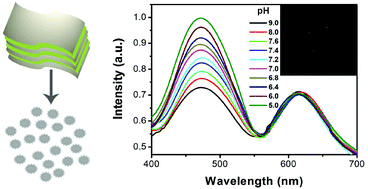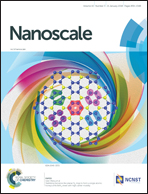Ratiometric photoluminescence sensing based on Ti3C2 MXene quantum dots as an intracellular pH sensor†
Abstract
Intracellular pH sensing is of importance and can be used as an indicator for monitoring the evolution of various diseases and the health of cells. Here, we developed a new class of surface-functionalized MXene quantum dots (QDs), Ti3C2, by the sonication cutting and hydrothermal approach and further explored their intracellular pH sensing. The functionalized Ti3C2 QDs exhibit bright excitation-dependent blue photoluminescence (PL) originating from the size effect and surface defects. Meanwhile, Ti3C2 QDs demonstrate a high PL response induced by the deprotonation of the surface defects. Furthermore, combining the highly pH sensitive Ti3C2 QDs with the pH insensitive [Ru(dpp)3]Cl2, we developed a ratiometric pH sensor to quantitatively monitor the intracellular pH values. These novel MXene quantum dots can serve as a promising platform for developing practical fluorescent nanosensors.



 Please wait while we load your content...
Please wait while we load your content...